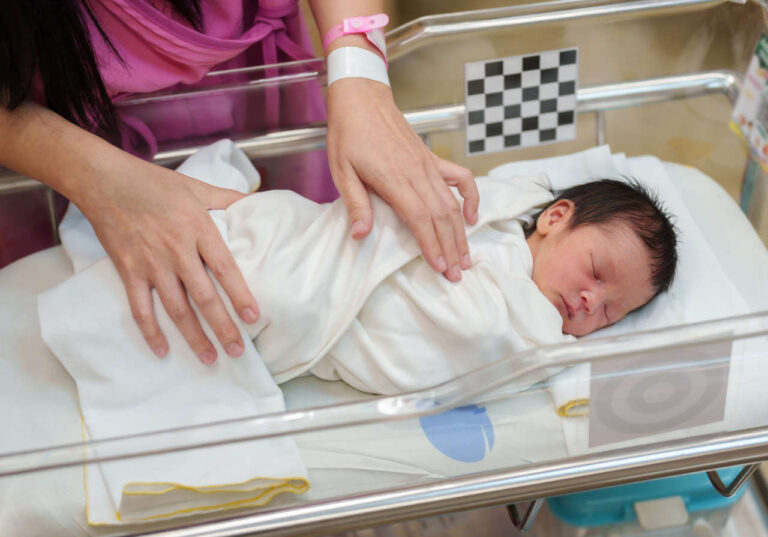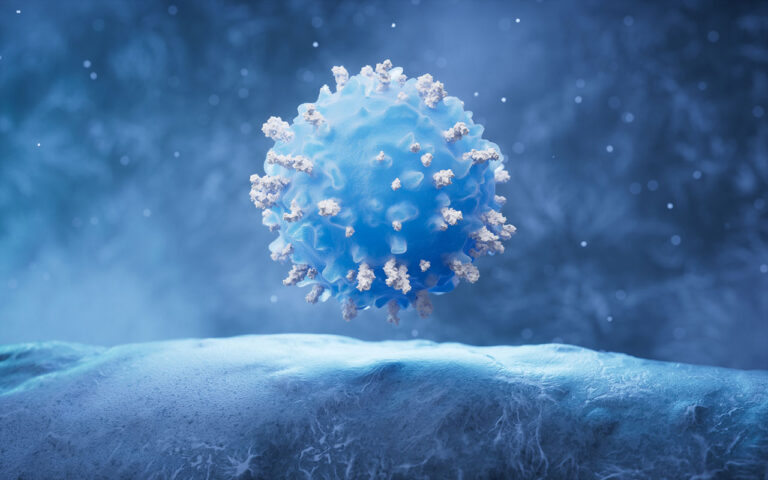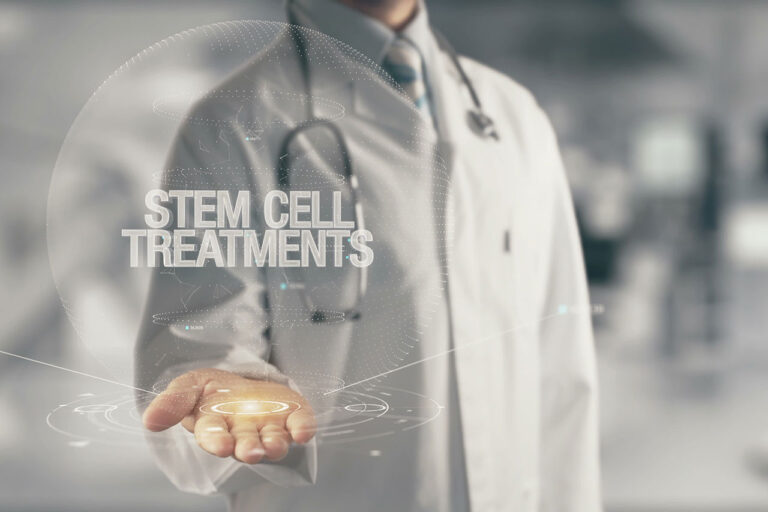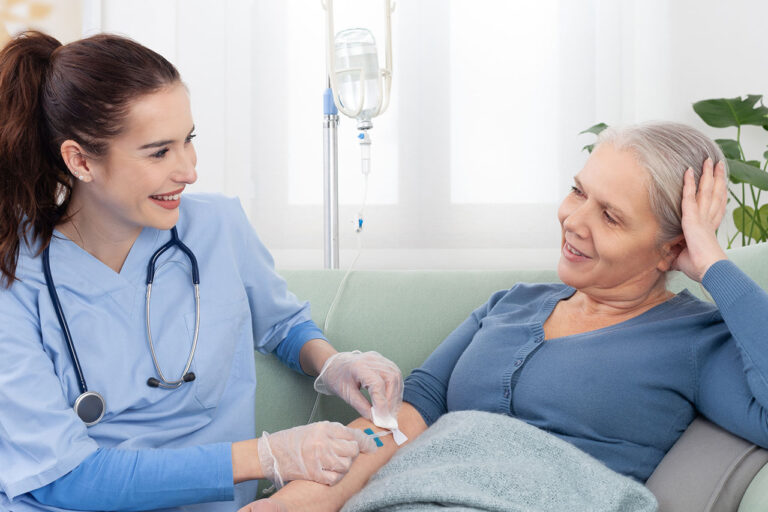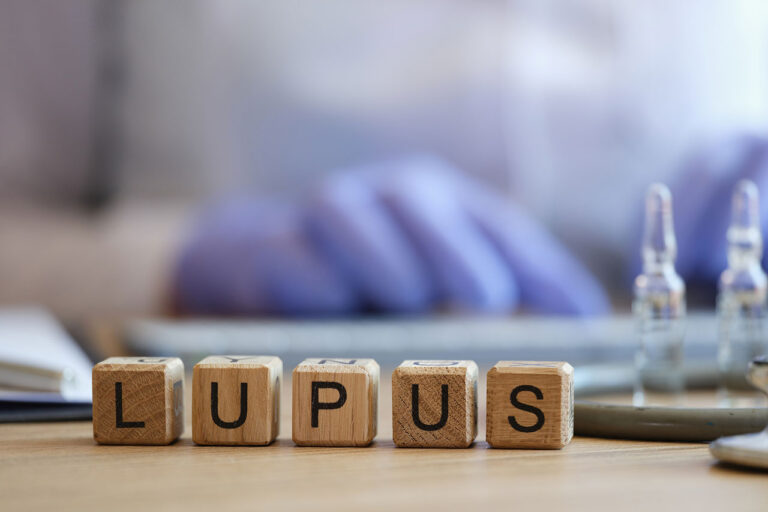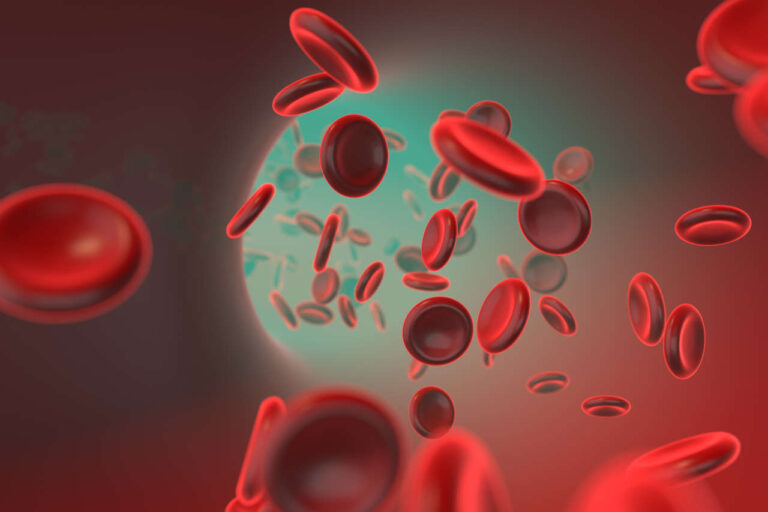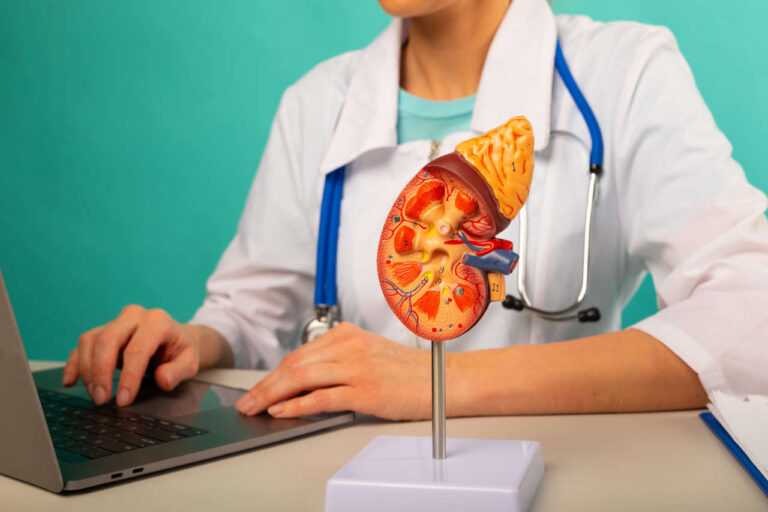
Hematophagocytic lymphohistiocytosis (HLH) is a rare, life-threatening condition where the immune system becomes dangerously overactive, attacking its own tissues and organs. Without early and proper treatment, HLH can lead to severe inflammation, multi-organ failure, and even death. Although HLH primarily affects infants and young children, adults can also develop this condition [2].
Get IVIG Copay Assistance
To improve survival in HLH, proper and early treatment is key. In recent years, among the available treatment options, intravenous immunoglobulin (IVIG) therapy has delivered promising results. In this article, we will discuss everything you need to know about IVIG for hematophagocytic lymphohistiocytosis (HLH).
Hematophagocytic Lymphohistiocytosis (HLH): Overview
Normally, when a foreign pathogen like a virus or bacteria enters the body, the immune system launches a controlled response to eliminate the infection. When the foreign pathogen is destroyed, the immune response gradually fades. However, in hematophagocytic lymphohistiocytosis (HLH), the immune system becomes overactive. Various immune cells, such as T-lymphocytes and macrophages, start attacking the blood cells, tissues, and organs. This can cause multiple organ failure and lead to death [2][3].
There are two main types of HLH. They are [1]:
- Primary (Familial) HLH: An inherited disease caused by genetic mutations. It usually appears in infancy or early childhood. Primary HLH accounts for about 25% of all HLH cases.
- Secondary (Acquired) HLH: Secondary HLH is triggered by various causes, including infections (such as Epstein-Barr virus), autoimmune diseases (like lupus), cancers, or certain medications.
Signs and Symptoms of HLH
The symptoms of HLH develop rapidly, and the severity varies from person to person. Some common symptoms of HLH include [1][2]:
- High and persistent fever
- Enlarged liver and spleen
- Low blood cell counts (anemia, low platelets, low white blood cells)
- Skin rash
- Enlarged lymph nodes
- Elevated iron level in blood
- Jaundice (yellowing of the skin or eyes)
Standard Treatment for HLH

The main goal of HLH treatment is to suppress the overactive immune system and prevent further organ damage. Standard treatment depends on whether HLH is primary or secondary and may include [1][3]:
- Corticosteroids (e.g., dexamethasone): These drugs reduce inflammation and calm the overactive immune system.
- Etoposide: A chemotherapy drug used to destroy overactive immune cells.
- Hematopoietic Stem Cell Transplant: This is the only possible cure for primary HLH.
- Supportive care: Includes antibiotics, antivirals, blood transfusions, and management of organ failure.
- Intravenous Immunoglobulin (IVIG): IVIG, when combined with other medications such as corticosteroids, is an effective treatment for HLH. It can help you get better by reducing the inflammation and regulating the immune response.
Speak to a Specialist
About Copay AssistanceHow Does IVIG Help Patients With Hematophagocytic Lymphohistiocytosis (HLH)?
Intravenous Immunoglobulin (IVIG) is a highly purified medical product made from the plasma of thousands of healthy blood donors. It contains antibodies that help balance and regulate the immune system in various autoimmune, inflammatory, or immunodeficiency conditions.
In hematophagocytic lymphohistiocytosis (HLH), the immune system becomes hyperactive and attacks its own blood cells, tissues, and organs. In this condition, IVIG can help by:
Modulating the Immune Response: IVIG can help calm an overactive immune system by suppressing immune cells like T-cells and macrophages that cause inflammation and tissue damage [4][5]. By regulating these cells, IVIG helps prevent further damage to the body.
Neutralizing Cytokines and Autoantibodies: In HLH, the immune system releases excessive cytokines (molecules that cause widespread inflammation) and produces autoantibodies that attack the body’s own cells. This uncontrolled immune activity leads to severe tissue damage and organ failure. IVIG can reduce inflammation and protect the body from further harm by neutralizing these harmful cytokines and autoantibodies [6].
Providing Passive Immunity: In cases where HLH is triggered by an infection, IVIG offers ready-made antibodies that help the body fight off the infection.
Protecting Organs: By reducing the inflammatory response, IVIG helps protect vital organs from further damage.
Overall, IVIG does not cure HLH on its own. But it serves an essential supportive role, especially in secondary HLH caused by infections or autoimmune diseases. When used early and alongside other standard treatments, IVIG can help stabilize patients, control inflammation, and improve overall outcomes [7].
Effectiveness of IVIG in Hematophagocytic Lymphohistiocytosis (HLH): What Studies Say
Studies suggest that the effectiveness of Intravenous Immunoglobulin (IVIG) in treating Hemophagocytic Lymphohistiocytosis (HLH) largely depends on the type of HLH and the timing of treatment. While IVIG is not a cure for HLH, it is a valuable tool, particularly in secondary HLH (sHLH), which develops as a result of infections, autoimmune diseases, or cancers.
Over the past decade, research has increasingly supported IVIG combined with corticosteroids as an initial treatment for secondary HLH (sHLH). This approach is especially valuable in patients for whom doctors want to avoid the serious side effects associated with etoposide, a chemotherapy drug commonly used in standard HLH treatment regimens.
For example, a 2014 study involving 40 children with HLH found that the combination of IVIG and Dexamethasone was a more preferable initial regimen than etoposide-based treatment. This is because the IVIG regimen can avoid the long-term risks of secondary cancers linked to etoposide use [8].
A more recent 2024 study highlighted the critical importance of early administration. The study observed that secondary HLH (sHLH) patients with sepsis who received IVIG and Dexamethasone early in their disease course showed significant clinical and laboratory improvements. On the other hand, patients who received IVIG late in their treatment had poorer outcomes, often resulting in death. This study suggests that there is a narrow window for maximum efficacy [7].
Similarly, the UK’s National Health Service (NHS) includes IVIG as a recognized treatment option for secondary HLH [10]. In one reported case study, two secondary HLH patients were treated with IVIG for five consecutive days [9]. Both of them recovered fully from their illness.
However, IVIG’s effectiveness appears to diminish in other HLH subtypes. A study of 46 adult HLH patients reported better long-term survival in infection-associated HLH but very poor long-term survival in malignancy-associated HLH [11]. Again, in cases of primary HLH, etoposide-based chemotherapy remains the standard of care.
In summary, IVIG plays a valuable supportive role in managing infection-triggered or autoimmune-related secondary HLH when given early in the disease course. However, in primary HLH or cancer-related secondary HLH, the benefits of IVIG are limited. Therefore, we need more large-scale clinical trials to better define IVIG’s role, optimal dosing, and combination strategies in different subtypes of HLH.
Get IVIG Prior Authorization
FAQs
Here are some of the most frequently asked questions about IVIG for hematophagocytic lymphohistiocytosis (HLH):
1. Is IVIG FDA-approved for treating HLH?
No. IVIG is not FDA-approved specifically for the treatment of HLH. However, IVIG is used “off-label” for treating HLH based on clinical judgment. Studies showed that IVIG is effective in treating HLH, particularly infection-associated or immune-related HLH.
2. Can IVIG cure HLH on its own?
No. IVIG alone cannot cure HLH. It can help stabilize the immune system and reduce inflammation. But IVIG usually needs to be combined with corticosteroids (e.g., dexamethasone) or other therapies.
3. How long does it take for IVIG to work in HLH?
Some patients see clinical improvements within 24-72 hours after starting IVIG treatment. However, the results vary depending on the severity, cause, and timing of treatment.
4. What is the typical dose of IVIG for HLH?
The typical dose of IVIG ranges from 1 to 2 grams per kilogram of your body weight. It can be given as a single infusion or divided into smaller doses spread over 2 – 5 days [12][13][14]. The exact dosing schedule depends on several factors, including the severity of your condition, response to treatment, and how well you tolerate the infusion. Your doctor will determine the most suitable dose and duration for you to achieve the best results.
REFERENCES:
- Hemophagocytic lymphohistiocystosis. (2024, October 30). Johns Hopkins Medicine. https://www.hopkinsmedicine.org/health/conditions-and-diseases/hemophagocytic-lymphohistiocystosis
- Konkol, S., Killeen, R. B., & Rai, M. (2025, May 3). Hemophagocytic lymphohistiocytosis. StatPearls – NCBI Bookshelf. https://www.ncbi.nlm.nih.gov/books/NBK557776/
- Wikipedia contributors. (2025, September 28). Hemophagocytic lymphohistiocytosis. Wikipedia. https://en.wikipedia.org/wiki/Hemophagocytic_lymphohistiocytosis#Causes
- Arumugham, V. B., & Rayi, A. (2023, July 3). Intravenous immunoglobulin (IVIG). StatPearls – NCBI Bookshelf. https://www.ncbi.nlm.nih.gov/books/NBK554446/
- Kaufman, G. N., Massoud, A. H., Dembele, M., Yona, M., Piccirillo, C. A., & Mazer, B. D. (2015). Induction of Regulatory T Cells by Intravenous Immunoglobulin: A Bridge between Adaptive and Innate Immunity. Frontiers in Immunology, 6. https://doi.org/10.3389/fimmu.2015.00469
- Velikova, T., Sekulovski, M., Bogdanova, S., Vasilev, G., Peshevska-Sekulovska, M., Miteva, D., & Georgiev, T. (2023). Intravenous immunoglobulins as immunomodulators in autoimmune diseases and reproductive medicine. Antibodies, 12(1), 20. https://doi.org/10.3390/antib12010020
- Saigal, S., Anand, A., Panda, R., Kodamanchili, S., Balakrishnan, G. T., Bhardwaj, K., Moolchandani, P., & Prajapati, P. (2024). Enlightening Role of Intravenous Immunoglobulin in Secondary Hemophagocytic Lymphohistiocytosis with Sepsis in an Intensive Care Unit. Indian Journal of Critical Care Case Report, 3(6), 154–156. https://doi.org/10.5005/jp-journals-11006-0133
- Rajajee, S., Ashok, I., Manwani, N., Rajkumar, J., Gowrishankar, K., & Subbiah, E. (2014). Profile of hemophagocytic lymphohistiocytosis; Efficacy of intravenous immunoglobulin therapy. The Indian Journal of Pediatrics, 81(12), 1337–1341. https://doi.org/10.1007/s12098-014-1461-0
- Successful treatment of Infection-Associated Hemophagocytic Syndrome with intravenous immunoglobulin. (n.d.). Department of Pediatric Hematology, Dokuz Eylül University Faculty of Medicine, Ýzmir, TURKEY. https://jag.journalagent.com/tjh/pdfs/TJH_20_2_95_99.pdf
- Haemophagocytic Lymphohistiocytosis (HLH) Guidance on the diagnosis, treatment, management and governance. (2025). https://gettingitrightfirsttime.co.uk/wp-content/uploads/2025/06/HLH-Guide-final-version-v1.3-June-2025.pdf
- Intravenous immunoglobulin therapy for secondary hemophagocytic lymphohistiocytosis : A retrospective study of 46 patients – ACR Meeting Abstracts. (2014, November 14). ACR Meeting Abstracts. https://acrabstracts.org/abstract/intravenous-immunoglobulin-therapy-for-secondary-hemophagocytic-lymphohistiocytosis-a-retrospective-study-of-46-patients/
- Halyabar, O., Chang, M. H., (2019). Table 3 HLH/MAS Evidence-Based Guideline Treatment Algorithm. https://ped-rheum.biomedcentral.com/articles/10.1186/s12969-019-0309-6/tables/3
- Ig Governance – Criteria for the clinical use of immunoglobulin in Australia. (n.d.). https://www.criteria.blood.gov.au/MedicalCondition/View/2573
- Georgiadou, S., Gatselis, N. K., Stefos, A., Zachou, K., Makaritsis, K., Rigopoulou, E. I., & Dalekos, G. N. (2019). Efficient management of secondary haemophagocytic lymphohistiocytosis with intravenous steroids and γ-immunoglobulin infusions. World Journal of Clinical Cases, 7(21), 3394–3406. https://doi.org/10.12998/wjcc.v7.i21.3394

